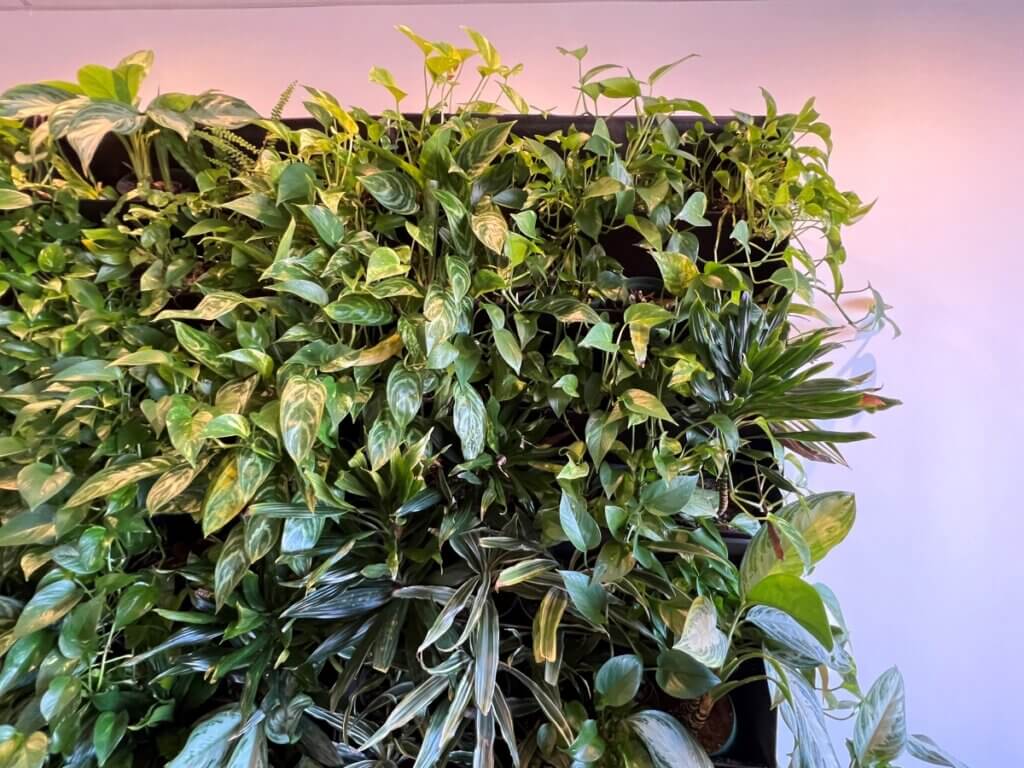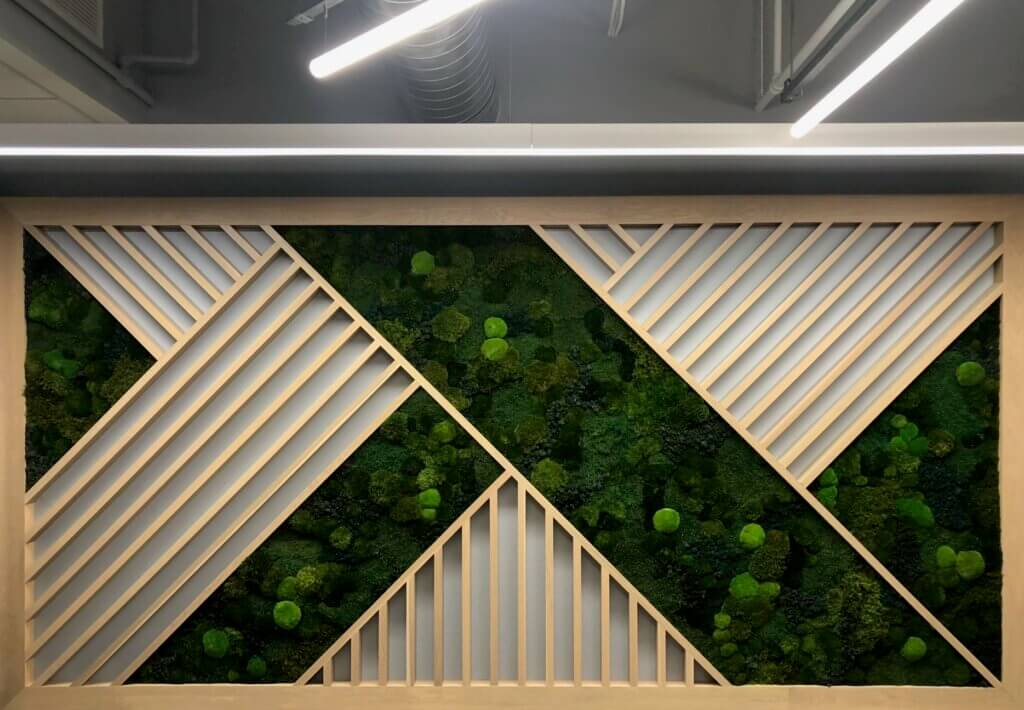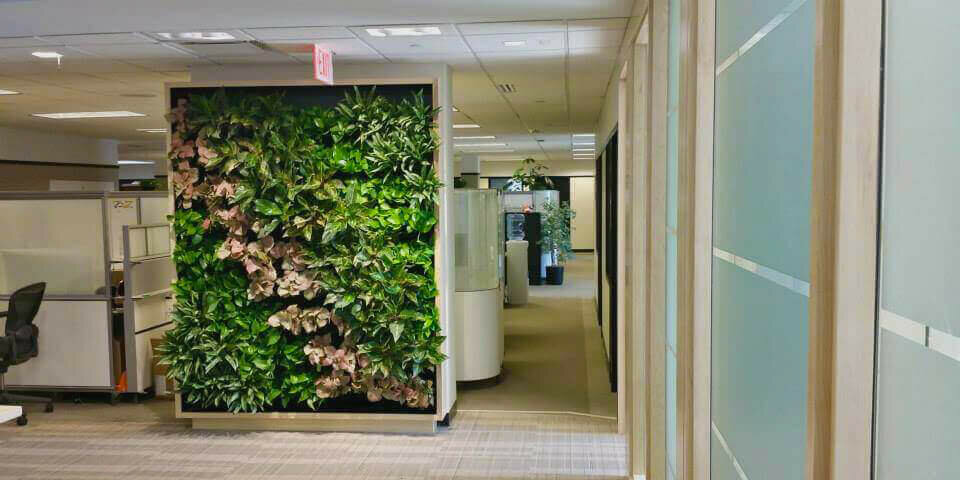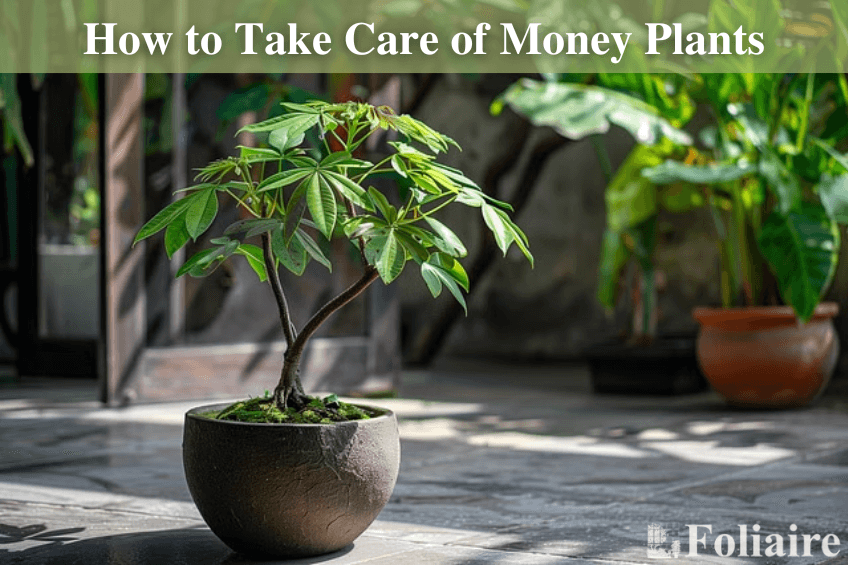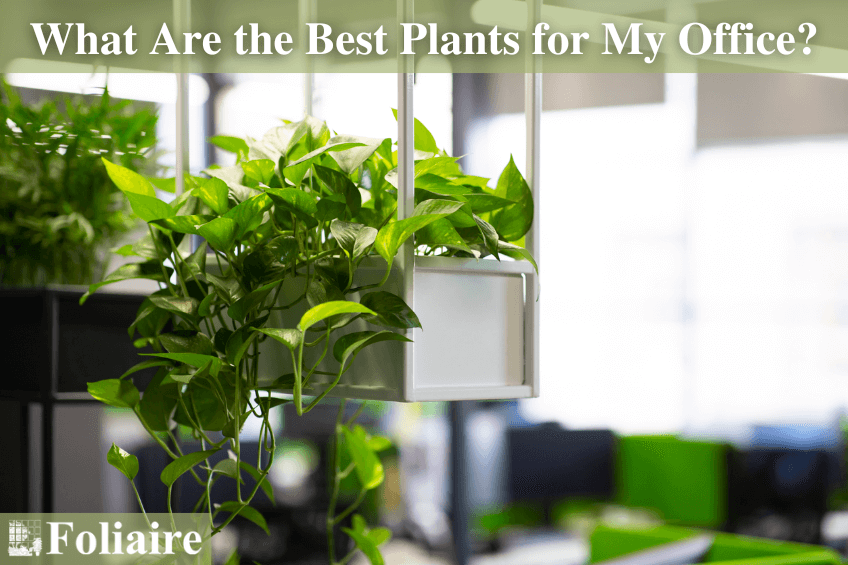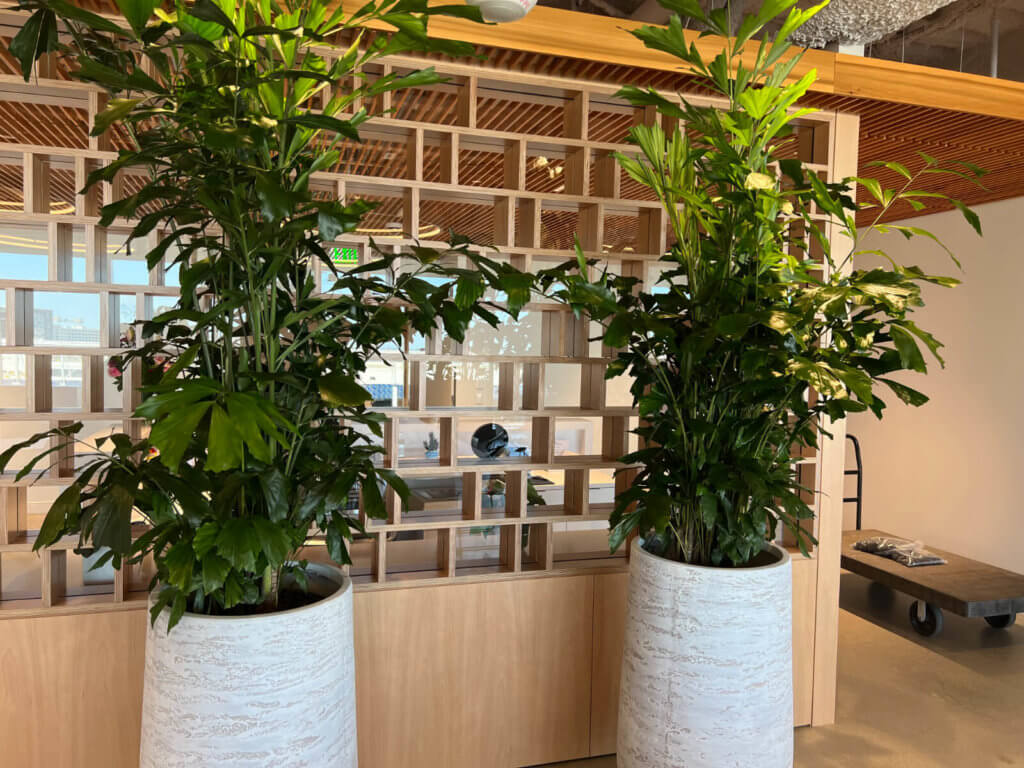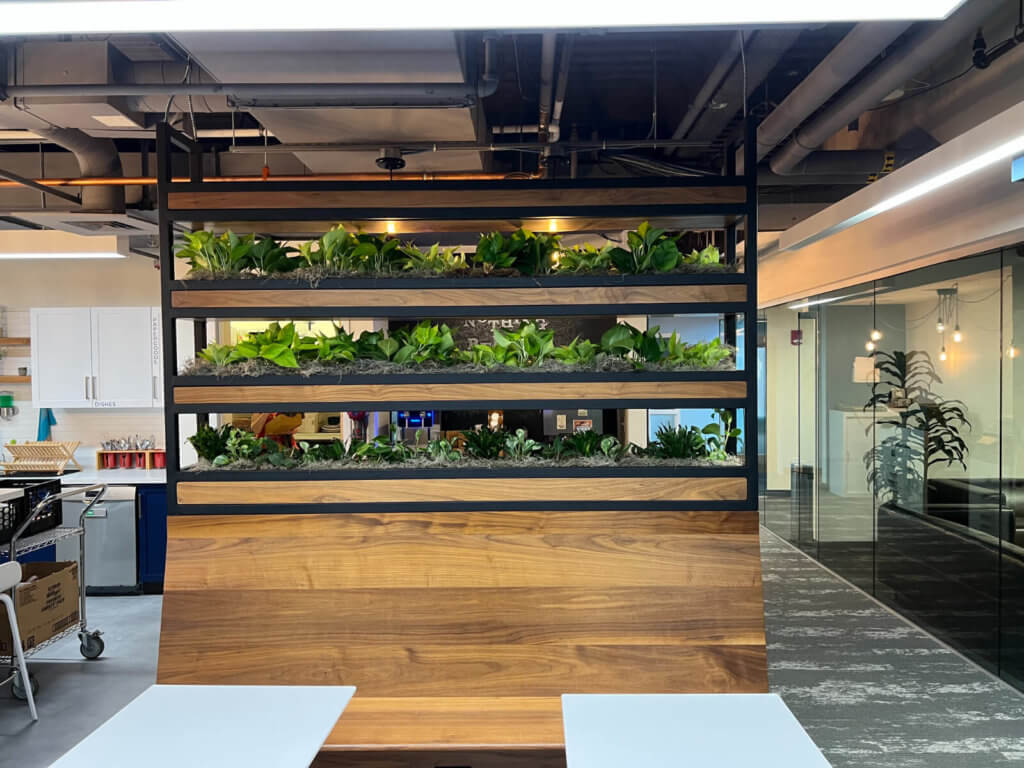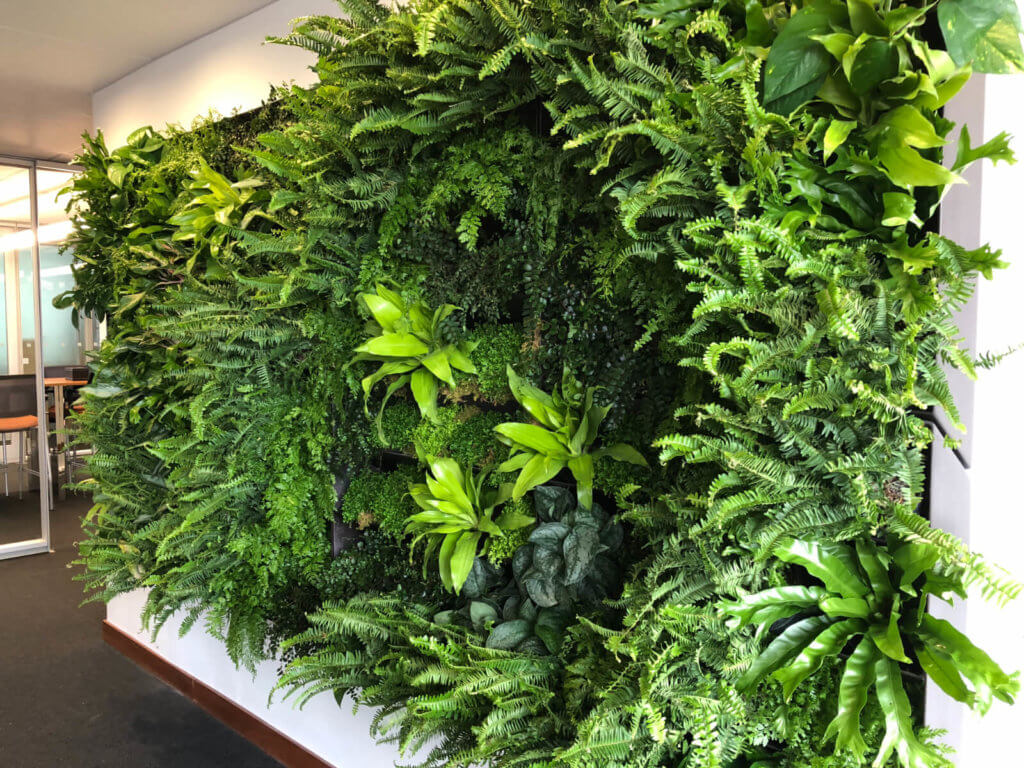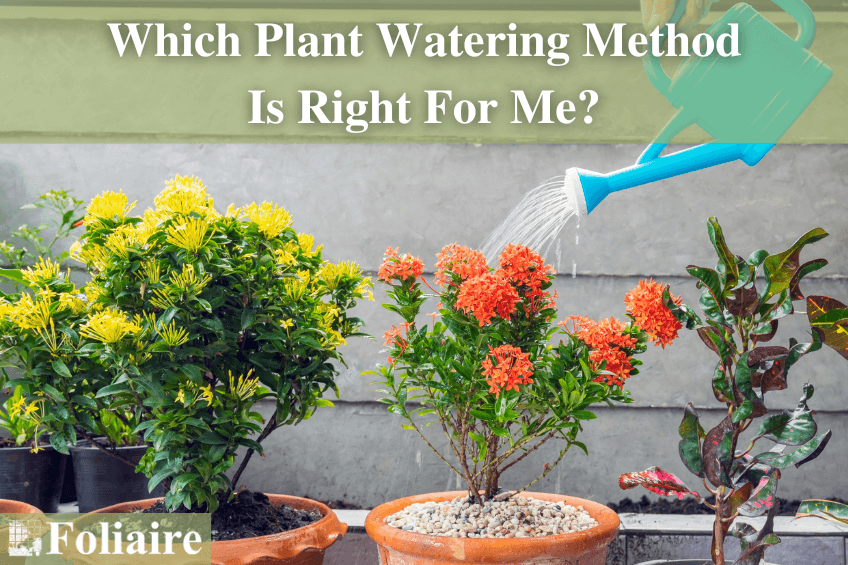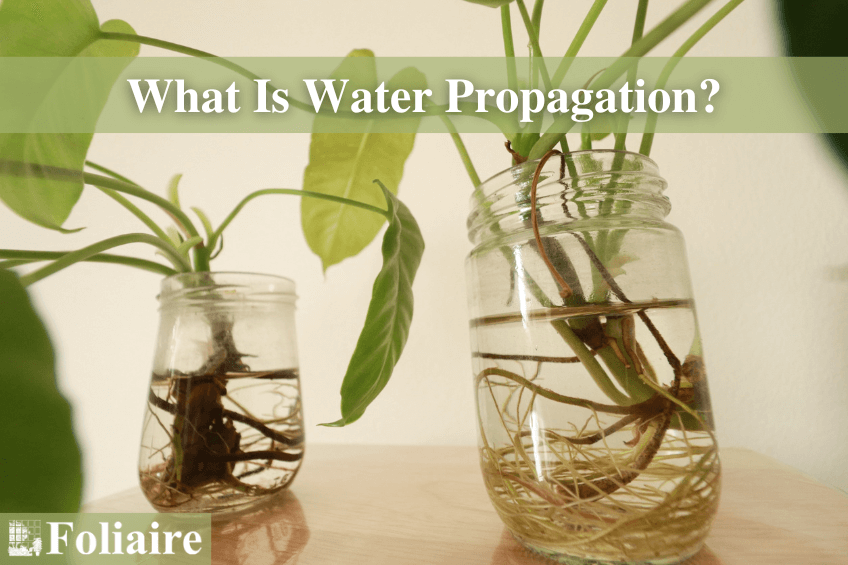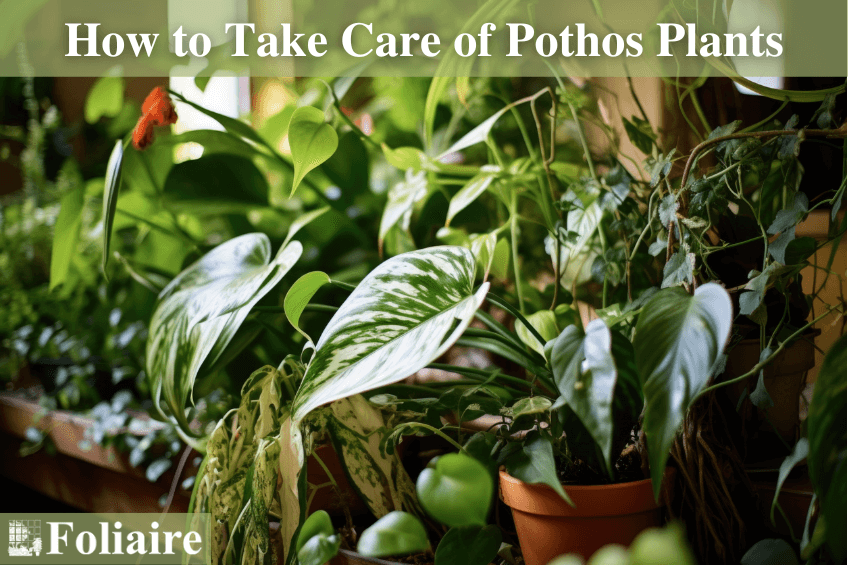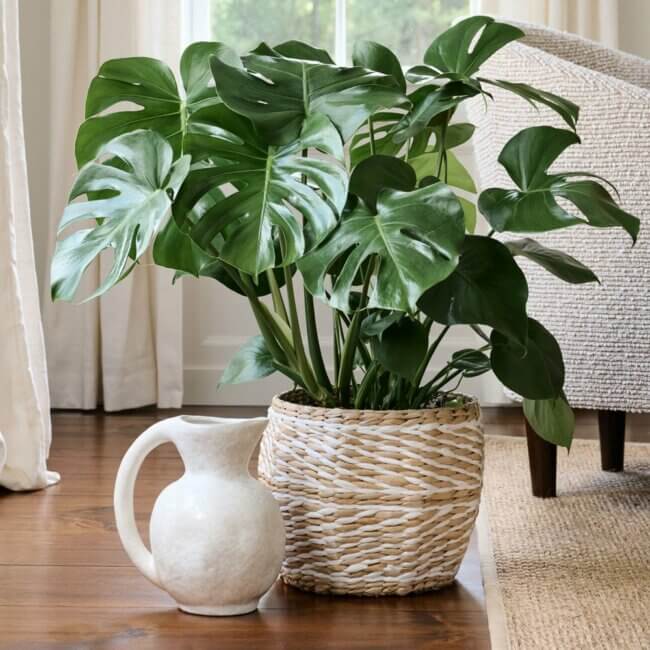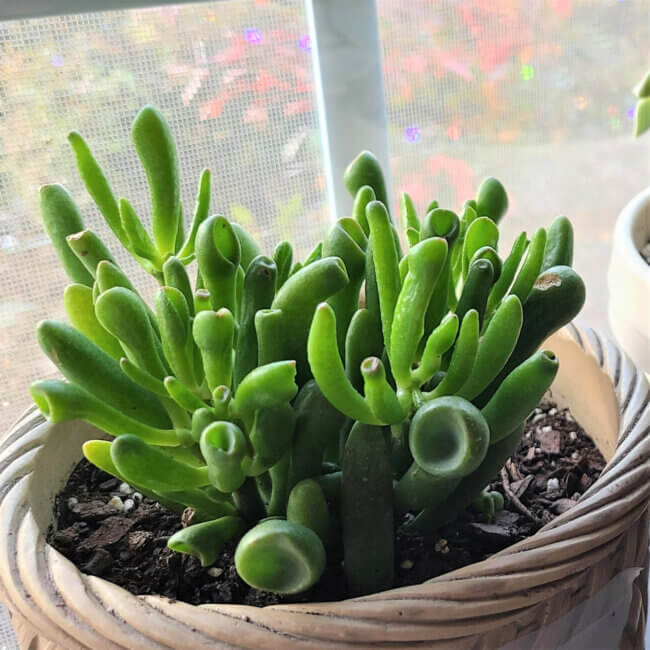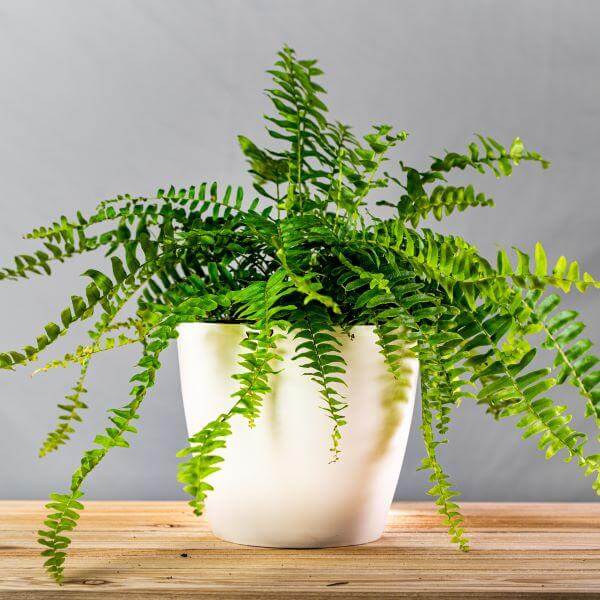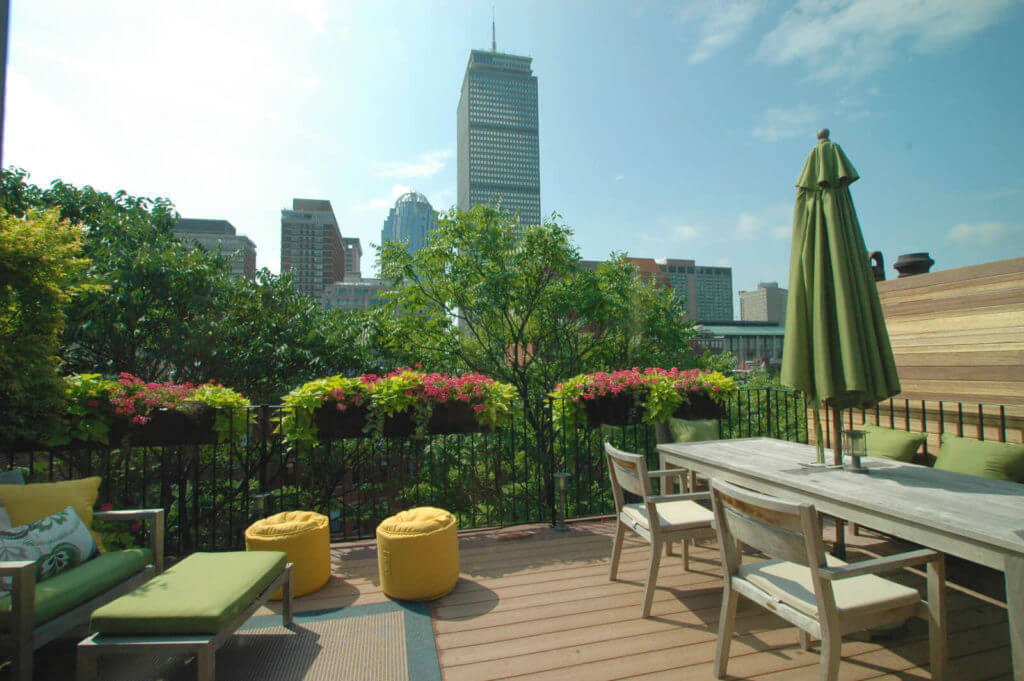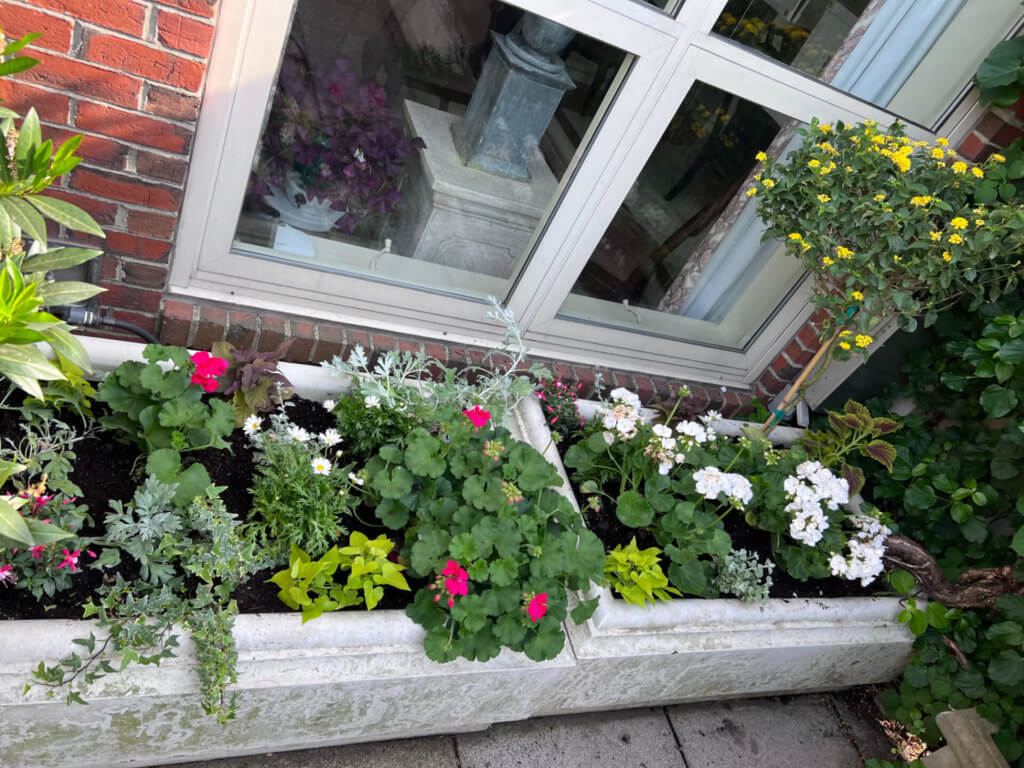Plant Care Tips: How to Take Care of Philodendrons
Philodendrons are popular options to add to your home or office, providing a tropical addition to any space. Two popular varieties are:
1) the Swiss Cheese Plant, which has rounded leathery leaves that develop deep lefts and oblong perforations as they grow older;
2) the Split Leaf Philodendron, also known as Monstera Deliciosa, has a unique leaf pattern of large split leaves.
While either plant variety would make a great addition to any room, you must ensure you offer it the right amount of light, water, and heat to grow and thrive.
Keep reading as we share some of our top plant care tips for these plants, so you can discover how to add one or both of these tropical varieties to your interior plantscape.
What You’ll Learn:
Light
Swiss Cheese and Split Leaf philodendron plants require bright but indirect sunlight to grow and thrive. If you offer too much sunlight in the summer, the foliage will be more likely to get burnt. You may be surprised to learn that this plant can also grow outside in the shade or semi-shade of the woodlands, which you can keep in mind if you add it to an urban garden.
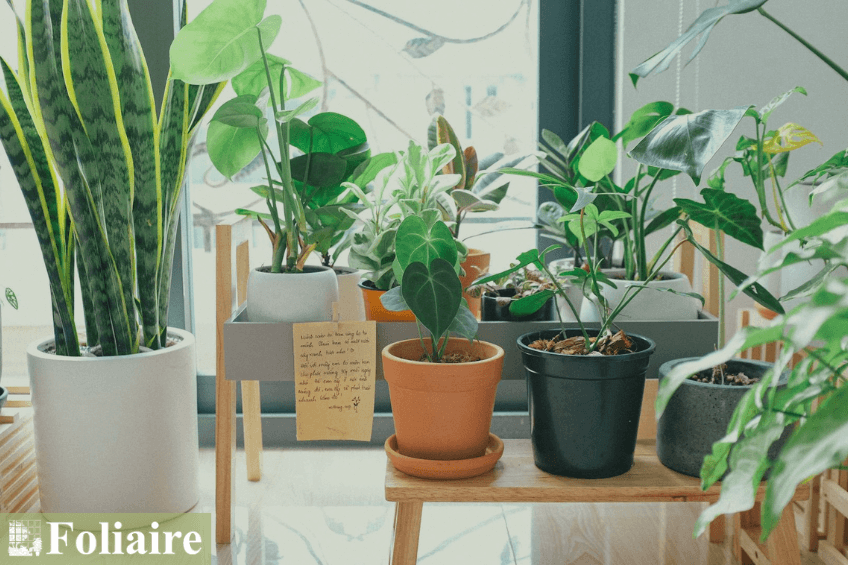
Indoor vs. Outdoor
Both the Swiss Cheese and Split Leaf varieties are native to the tropical climates of Mexico and Central America. They can easily acclimate as year-round indoor plants regardless of where you live. However, if you live in an area with cold winters and plan to include them in a roof garden or other outdoor plantscape, they will need to be brought indoors over the colder months.
When you bring them outside again in the Spring, even indirect sunlight might be too intense for them at first. Plan to keep them in heavy shade – like under a tarp – for the first two weeks. That way, they can adjust to being outdoors again.
Soil
If placing your philodendron plants within a container, use a peat-based potting medium for the base. For those who live in milder climates, you can plant directly in the garden in light sandy soil.
In either case, the plant will need a pH between neutral and acidic to grow, but whatever type of soil you use, ensure that it is porous and well-drained.
Do you need help revitalizing your outdoor garden?
Watering
During the main growing season – generally Spring and Summer – one of the most important plant care tips is to ensure that you water your Split Leaf or Swiss Cheese plant weekly. Continue watering the plant until the excess water seeps through the drainage holes, then stop adding water. Give the soil time to dry out between each watering session.
In the fall and winter months, you won’t need to water either variety of plants as often, but misting an indoor plant may be helpful to increase the humidity in your house.
Temperature
The perfect temperature for philodendron plants in your indoor plantscape is between 65 and 75 degrees Fahrenheit. As mentioned above, this temperature is needed alongside bright and indirect sunlight to give your plants the best chance to grow.
If the temperature in your area dips below 65 degrees for much of the year, you might find it impractical to include it in your outdoor plantscape.
Fertilizer
We recommend using a balanced fertilizer three or four times yearly to help your plant reach its maximum potential. When secured to a stake or pole, you’ll find that the Split Leaf variety can grow up to 10 feet tall. However, you’ll need to ensure you follow all of the plant care tips we’ve shared today to experience this.
A balanced 20-20-20 fertilizer is your best bet for the Split Leaf and Swiss Cheese plants, which can occur every few weeks within the main growing season. Create a mixture of fertilizer and water, which you can then pour into the soil during your weekly watering.
See how we can transform your interior garden today!
Spread vs. Vertical
There are generally two styles of training for the Split Leaf and Swiss Cheese philodendron plants. They can train to climb a stake or pole (vertical style), or they can spread out over a large area (spread style). Decide which style will work best in your space.
Do you have a tall space to fill, such as an accent wall, or a large area to fill – such as a plant container in the lobby of an office building? Whichever style you choose, it’s important to stay consistent.
If you plan to use the vertical style, tie the plant to the stake from the beginning. Later, it will be hard to re-train a spreading style plant into the vertical style.
Potting
Roughly every two years, you’ll need to report the Split Leaf or Swiss Cheese plant so it continues growing. These plants outgrow their current pot every couple of years. You’ll want to upgrade to a slightly wider and deeper pot to offer it the extra space.
We recommend using pots made from terracotta or clay, as they offer the plant extra airflow and drainage. The main thing to look for is that the pot has drainage holes.
To pot or repot your plant, add a peaty potting medium to the bottom third of your pot. For the vertical style, create a stake for the plant’s stem and gently set the roots into the pot. Cover the roots with the soil before using plant ties to secure the stem.
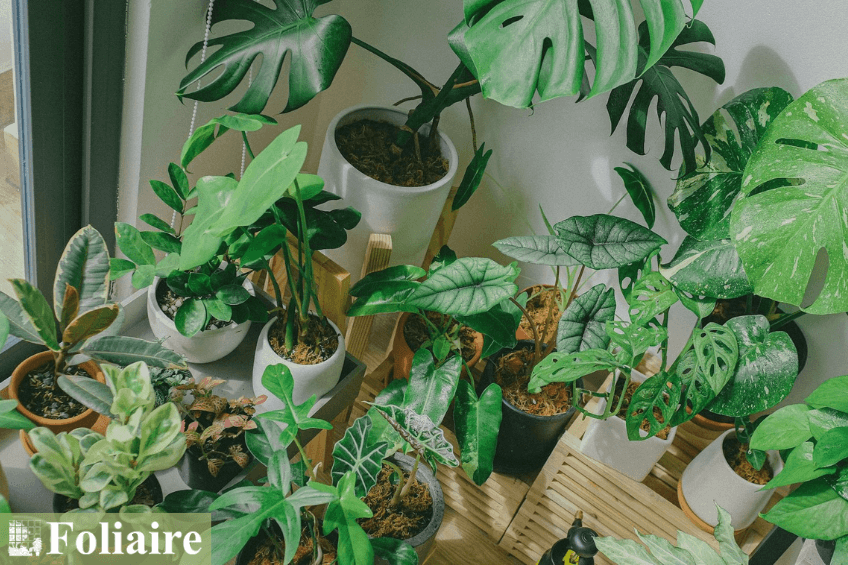
Common Problems
The Monstera Deliciosa or Swiss Cheese variety makes a fantastic addition to your interior plantscaping. However, there are a few considerations to keep in mind about this plant. It may attract common pests, such as scale and mealybugs.
The best way to avoid this issue in the first place is to catch it before it gets established. Regularly examine the plant to nip trouble in the bud. Use a Q-tip dipped in rubbing alcohol to rid the plant of mealybugs. Use a horticultural oil or Murphy’s soap to remove the scale.
The other issues you may experience are in regard to the leaves. The tips of the leaves may turn brown when the soil is dry. You can avoid this issue by following our plant care tips above for watering. Yellow leaves are also a problem when the soil is dry, and for both of these issues, you should remove the impacted leaves straight away before trying to remedy the problem.
Finally, wilting leaves are a sign of a watering problem, which could be either overwatering or underwatering the plant. Be very mindful of how much water you add to the pot to avoid damage to your plant.
Key Takeaways
Philodendron plants can enhance your indoor plantscaping or urban garden. With a little care and attention, you’ll find it a very attractive plant to add to any room in your home, creating a tropical atmosphere in any space.
Make sure you keep an eye on how much you water the plant and always place it in indirect sunlight. By keeping the watering, soil plant care, and temperature tips we shared above in mind, you’ll find that this plant will continue to grow year after year, creating a centerpiece for your home or office.
Philodendrons are one of the most exciting indoor plants to consider investing in this year. We hope these tips will make caring for either variety of plants a little easier for you shortly.
Ready to unlock your garden’s full potential?
View Our Other Plant Care Tips
For more guidance on creating the perfect environment for your houseplants or to explore more about indoor landscape design, visit Foliaire’s wealth of resources. Let us help you cultivate an indoor oasis that brings beauty, health, and well-being into your everyday life.
- Ferns
- Tropical Plants
- Fiddle Leaf Figs
- Lawn and Garden
- Top 10 Pet-Safe House Plants
- Why Are My House Plants Dying?
- Top 10 House Plants for Beginners
- How to Find the Best Garden Decor
- What Is The Ideal Humidity for House Plants?
- What’s the Difference Between Plantscaping and Landscaping?
Boston’s Plantscaping Specialists
Foliaire is a full-service interior and exterior greenscape design-build firm in Boston’s historic South End. For the last 40 years, we’ve provided the highest rooftop garden and plantscaping services for clients across the Boston Metro area.
We customize and plan our roof garden projects and interior plantscaping to fit your unique space and tastes. That’s how we’ve built a reputation of unparalleled style and elegance for corporate plantscaping and residential community projects.
In addition, we’ve received several environmental design awards and have appeared in several publications. You can find us in Architectural Digest, House and Garden, Horticulture, and Interiorscape.
Follow us on social media @Foliaire for more valuable plant care advice:



